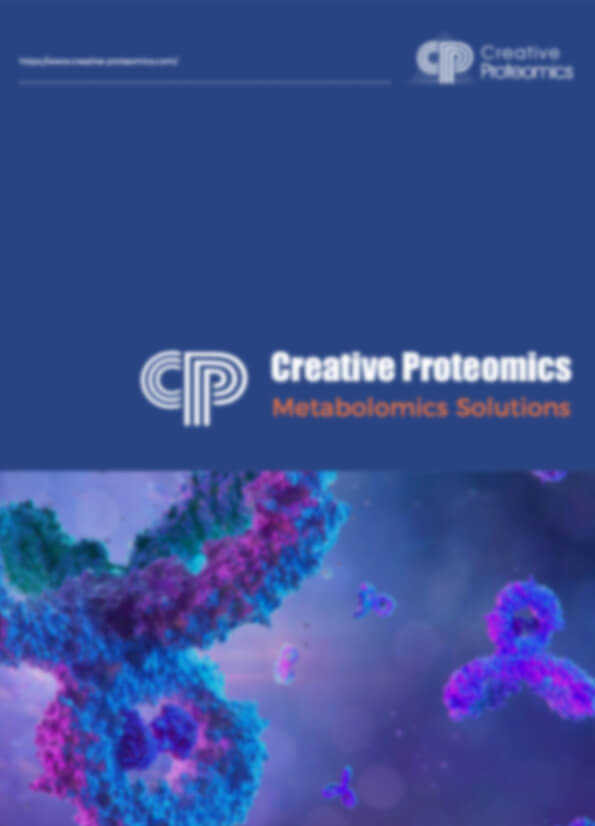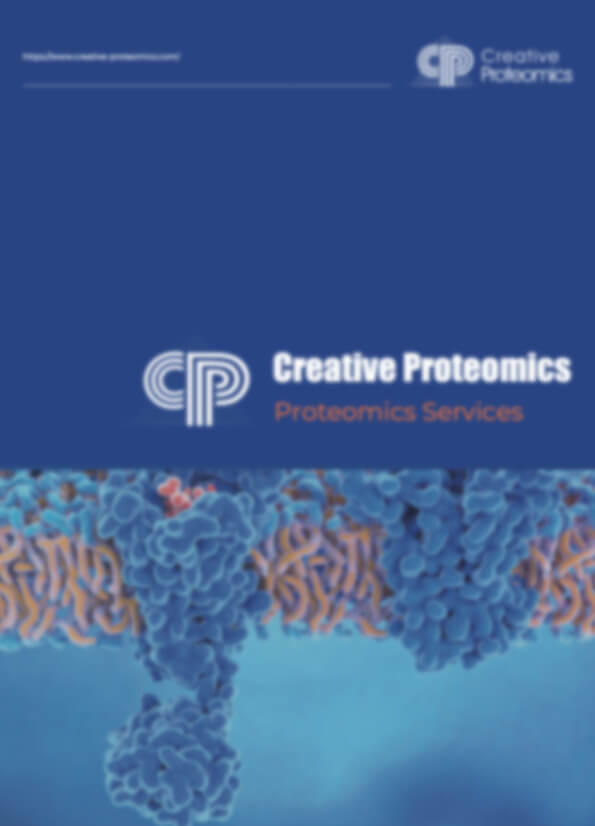- Service Details
- Case Study
- FAQ
What is GSH and GSSG?
Glutathione is an important tripeptidethiol (γ-glutamylcysteinyl glycine) antioxidant composted of three amino acids, cysteine, glycine, and glutamate. As an important tripeptidethiol antioxidant widely distributed in biological fluids and tissues of plants, animals, fungi, and some bacteria and archaea, it is associated with many physiological functions, such as the transportation of amino acids, the synthesis of proteins and DNA, the stabilization of cell membranes and the detoxification of xenobiotics.
Glutathione plays an important role in fighting against toxic effects brought by reactive oxygen species like free radicals, lipid peroxides, peroxides and heavy metals. The reduced glutathione/oxidized glutathione ratio (GSH/GSSG) is widely used in clinics for the evaluation of oxidative stress status in biological systems. The changes of the ratio are shown existed in medical disorders such as inflammation, autoimmune disorders, sepsis, apoptosis, aging, cancer, HIV replication, and cardiovascular diseases.
The reduced form of glutathione GSH and oxidized form of glutathione GSSG work together with other redox-active compounds such as NADPH to maintain and regulate cellular redox status. GSH is quantitatively described as the redox potential, calculated by the Nernst equation. The synthesis of GSH is catalyzed by L-cysteine –ligase and glutathione synthase, while the oxidation, conjugation, and hydrolysis contribute to the consumption of GSH. Conjugation with endogenous and exogenous electrophiles is responsible for a large portion of cellular GSH consumption. The balance between its production, consumption, and transportation determine and strictly regulate the intracellular and extracellular GSH levels. The activities of the enzymes associated with GSH metabolism are regulated at transcriptional, translational, and posttranslational levels.
Besides acting as antioxidant, glutathione has several additional functions. For example, it is a reserve of cysteine and nitric oxide. It also takes part in the metabolism of estrogens, leukotrienes, and prostaglandins and the reduction of ribonucleotides to deoxyribonucleotides. What's more, it is associated with the operation of certain transcription and the detoxification of many endogenous compounds. Because of its significant role in the organism, it is of great interest among pharmacologists to take GSH system as a possible target for medical interventions. Buthioninesulfoximine (BSO) has been used as the most popular approach to depleting GSH. Supplementation with precursors, such as cysteine in the form of different esters, has been used to enhance GSH levels.
GSH and GSSG Service at Creative Proteomics
- Quantitative Analysis of GSH and GSSG Levels: Accurate measurement of reduced and oxidized glutathione levels using sensitive analytical techniques.
- Redox State Assessment: Determination of the redox status of biological samples to understand oxidative stress and antioxidant capacity.
- Glutathione Metabolism Studies: Comprehensive analysis of glutathione metabolism pathways to elucidate regulatory mechanisms.
- Customized Experimental Design: Tailored experimental approaches to meet specific research needs and objectives.
- Data Interpretation and Reporting: Detailed analysis reports with comprehensive data interpretation and recommendations.
Analytical Techniques for GSH and GSSG
High-Performance Liquid Chromatography (HPLC)
HPLC is a cornerstone technique for the separation and quantification of GSH and GSSG in biological samples. This method leverages the differential retention times of GSH and GSSG on a chromatographic column, followed by detection using UV-Vis absorbance or fluorescence detection. Key features of HPLC include:
- Separation Power: HPLC separates GSH and GSSG from complex matrices, such as cell lysates or tissue homogenates, allowing for accurate quantification.
- Sensitivity: HPLC coupled with sensitive detectors enables detection of GSH and GSSG at low concentrations, ensuring precise measurement even in trace amounts.
MS enhances the specificity and structural elucidation of GSH and GSSG. Creative Proteomics utilizes HPLC-MS for comprehensive analysis, combining the separation capabilities of HPLC with the molecular specificity of MS. Key advantages of MS include:
- Identification: MS provides structural information, confirming the presence of GSH and GSSG based on their molecular mass and fragmentation patterns.
- Quantification: MS offers high sensitivity and accuracy in quantifying GSH and GSSG, particularly beneficial for complex samples where other techniques may lack specificity.
Fluorescence Detection
Fluorescence-based methods exploit the intrinsic fluorescence properties of GSH and GSSG, particularly their ability to emit fluorescence upon excitation at specific wavelengths. This technique offers:
- Sensitivity: Fluorescence detection is highly sensitive, allowing for quantification of GSH and GSSG in nanomolar concentrations.
- Selectivity: By targeting specific fluorescent properties, this method ensures minimal interference from other components in biological samples.
Sample Requirements for GSH and GSSG Analysis
| Sample Type | Recommended Amount | Additional Notes |
|---|---|---|
| Cell Culture | 1 million cells | Cells should be harvested and lysed using appropriate methods. |
| Tissue Homogenate | 10-50 mg | Homogenization in suitable buffer is necessary for uniformity. |
| Blood Plasma/Serum | 100-500 µL | Anticoagulants should be used during collection to prevent clotting. |
| Urine | 1-5 mL | Proper handling and storage conditions are critical for stability. |
Application for GSH and GSSG Analysis
Oxidative Stress Indicator
The ratio of GSH to GSSG is widely used as an indicator of oxidative stress and overall redox environment within cells, tissues, and biological fluids. A decreased GSH/GSSG ratio suggests increased oxidative stress, which can contribute to various diseases and pathological conditions.
Antioxidant Status
GSH is one of the major antioxidant compounds in the body, playing a crucial role in neutralizing reactive oxygen species (ROS) and free radicals. Measuring GSH levels can provide information about the antioxidant capacity and ability to combat oxidative damage.
Detoxification
GSH is involved in the detoxification of many endogenous and exogenous compounds, including xenobiotics and heavy metals. Monitoring GSH levels can help assess the body's detoxification capabilities and potential toxicity risks.
Metabolic Functions
GSH participates in various metabolic processes, such as the synthesis of leukotrienes, prostaglandins, and the metabolism of estrogens. GSH and GSSG analysis can provide insights into the regulation of these metabolic pathways.
Profiling the Concentration of Reduced and Oxidized Glutathione in Rat Brain Using HPLC/DAD Chromatographic System
Journal: Molecules
Published: 2021
Background
Glutathione (GSH), a tripeptide composed of L-γ-glutamyl-L-cysteinyl-glycine, plays a crucial role in protecting against reactive oxygen and nitrogen species (ROS and RNS). It is a key component of the endogenous antioxidant system, with its antioxidant effect primarily attributed to the reactive thiol (-SH) group in the cysteine residue. GSH is involved in numerous physiological processes, including defense mechanisms and delaying the onset of age-related diseases. The GSH/GSSG ratio is a significant indicator of oxidative status, with imbalances in GSH homeostasis commonly linked to neurodegenerative diseases. Low GSH/GSSG ratios are associated with conditions such as cancer, diabetes, and central nervous system disorders. Various analytical methods, including spectrophotometry, LC-MS, and GC-MS, have been used to measure GSH levels, each with its advantages and limitations. Accurate measurement of the GSH/GSSG ratio is vital for assessing oxidative stress in various diseases.
Technical Methods
The study aimed to develop and validate a high-performance liquid chromatography (HPLC) method coupled with a diode array detector (DAD) for determining GSH and GSSG levels in rat brain samples. The method overcomes the limitations of traditional photometric techniques, which lack specificity and have low detectability.
Chromatographic Conditions:
- Mobile Phase: Acetonitrile (A) and phosphate buffer (20 mM, pH 2.5) (B).
- Elution Gradient: Detailed in Table 1 of the original document.
- Injection Volume: 50 μL.
- Flow Rate: 1 mL/min.
- Detection: 330 nm with a DAD detector (range 200-700 nm).
- Column: Zorbax Eclipse XDB-C8, 5 μm, 4.6 × 150 mm.
- Derivatization: GSH was reacted with Ellman's reagent (DTNB), with GSSG reduced to GSH at 80°C after 60 minutes of incubation.
Validation Parameters:
- Linearity: Evaluated with seven concentration levels in triplicates, showing strong linearity (GSH: y=1562x-350.11, r²=0.997; GSSG: y=2124.4x-1493.4, r²=0.996).
- Selectivity: Verified by injecting samples with and without GSH and GSSG, ensuring no overlapping peaks at the retention time.
- Accuracy and Precision: Assessed using quality control samples, showing good accuracy and precision with RSD% <15%.
- Stability: QC samples showed stable recovery rates after storage at room temperature for 12 and 24 hours.
- Robustness: Evaluated by varying chromatographic parameters, maintaining consistent results.
Results
The newly developed HPLC-UV method demonstrated significant advantages over photometric methods, including higher specificity and detectability. The method was validated according to international guidelines, ensuring its applicability for brain GSH/GSSG analysis. The method successfully measured GSH and GSSG levels in rat brain samples from a pharmacological experiment, with average concentrations of 24.82 ± 1.68 μg/g for GSH and 6.54 ± 3.09 μg/g for GSSG. This method allows precise quantification of GSH and GSSG in biological samples, making it a valuable tool for research on oxidative stress and related diseases.
 Analytical curves for reduced (GSH) (A) and oxidized glutathione (GSSG) (B) in the range 0.50–50 μg/g brain
Analytical curves for reduced (GSH) (A) and oxidized glutathione (GSSG) (B) in the range 0.50–50 μg/g brain
 Representative chromatograms of a spiked rat brain sample.
Representative chromatograms of a spiked rat brain sample.
Reference
- Jîtcă, George, et al. "Profiling the concentration of reduced and oxidized glutathione in rat brain using HPLC/DAD chromatographic system." Molecules 26.21 (2021): 6590.
What is the difference between GSH and GSSG?
Glutathione (GSH) and glutathione disulfide (GSSG) are both forms of glutathione, a crucial antioxidant present in cells. The primary difference lies in their chemical structure and functional roles:
- GSH (Reduced Glutathione): This is the active antioxidant form of glutathione. It acts as a potent scavenger of reactive oxygen species (ROS) and free radicals within cells, thereby protecting cellular components such as proteins, lipids, and DNA from oxidative damage. GSH plays a vital role in maintaining cellular redox balance and supporting various cellular processes.
- GSSG (Oxidized Glutathione): GSSG is the oxidized form of glutathione, formed when GSH undergoes oxidation reactions, particularly in response to oxidative stress. GSSG itself is less effective as an antioxidant compared to GSH. However, the ratio of GSH to GSSG is crucial for cellular redox signaling and antioxidant defense mechanisms.
What is a good GSH ratio?
The ratio of GSH to GSSG is a critical indicator of cellular oxidative stress and redox balance. A higher GSH ratio generally indicates a more reduced cellular environment, which is beneficial for cellular function and overall health. Conversely, a lower GSH ratio may indicate increased oxidative stress and potential cellular damage.
- Ideal Ratio: While the exact optimal ratio may vary depending on cell type and physiological conditions, a typical healthy ratio is often considered to be greater than 100:1 (GSH). This high ratio reflects an efficient antioxidant defense system and effective management of oxidative stress within cells.
- Significance: Maintaining a balanced GSH ratio is crucial for cellular function, as it regulates redox-sensitive signaling pathways, gene expression, and antioxidant defense mechanisms. Monitoring and supporting this ratio through diet, lifestyle, and antioxidant supplementation can contribute to overall health and disease prevention.









